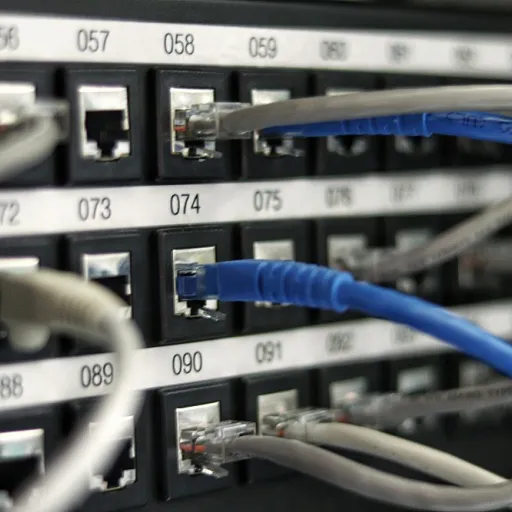
Understanding ecosystems containers in modern software
What are ecosystems containers and why do they matter?
Ecosystems containers are transforming how modern software is built, deployed, and managed. At their core, these containers are more than just isolated environments—they act as the backbone for scalable, flexible, and efficient software systems. Just as a molded fiber food plate with compartments keeps different foods separate and fresh, ecosystems containers keep software components organized and running smoothly within larger eco systems. The concept borrows from packaging food: think of a hinged container or clamshells that protect and separate hot cold items, ensuring each retains its quality. Similarly, ecosystems containers enable developers to package applications and their dependencies together, making it easier to move and run them across different environments. This is crucial for foodservice and packaging solutions companies, where consistency and reliability are non-negotiable.How ecosystems containers fit into the broader software landscape
Ecosystems containers are not just about isolation—they are about integration. They allow for seamless collaboration between different software components, much like how a white compartment or kraft box can organize a variety of foods for efficient delivery. This approach supports both cold food and hot cold applications, ensuring that each part of the system functions as intended, whether it’s a lightweight container black for quick tasks or a mineral filled, microwave safe compartment molded for more demanding workloads. The rise of containerization has also changed how companies approach shipping orders and free shipping logistics in software deployment. With containers, software can be shipped quickly and reliably, reducing the weight lbs of operational overhead and making it easier to scale up or down as needed. For those interested in how these trends connect to broader shifts in technology, exploring the future of cloud-based software suites offers valuable context on how ecosystems containers are influencing the next generation of software packaging and delivery.- Containers provide a consistent environment for software, much like dome lids and oval plates protect and present food products.
- They support both legacy and modern applications, bridging the gap between traditional and cutting-edge solutions.
- Packaging food and software share similar challenges: maintaining quality, ensuring safety, and enabling efficient distribution.
Key benefits of adopting ecosystems containers
Why Ecosystems Containers Are Transforming Software
Ecosystems containers are rapidly becoming a cornerstone in the evolution of software, offering a host of advantages for both developers and businesses. These containers act like modular packaging solutions in the foodservice industry—think of compartment molded fiber plates or hinged clamshells that keep hot and cold food separate yet accessible. In software, this translates to isolated, manageable environments that streamline deployment and maintenance.
- Efficiency and Scalability: Ecosystems containers allow teams to package applications and their dependencies together, much like how a white compartment plate keeps food items organized. This modularity enables rapid scaling and consistent performance across different environments, whether you’re dealing with a single app or a complex eco system of services.
- Portability: Just as a kraft or black hinged container can transport food safely, software containers make it easy to move applications between development, testing, and production. This portability reduces friction and supports a more agile workflow.
- Resource Optimization: Containers are lightweight, similar to mineral filled or molded fiber packaging that minimizes weight lbs and shipping costs. They use system resources efficiently, allowing for higher density and lower overhead compared to traditional virtual machines.
- Consistency: Ecosystems containers ensure that software behaves the same way regardless of where it runs. This is akin to the reliability of ecohc food packaging, which guarantees food safety and presentation from kitchen to table.
- Enhanced Collaboration: By standardizing environments, containers foster better collaboration between development and operations teams. This mirrors how standardized packaging food solutions simplify logistics for foodservice businesses.
For organizations exploring innovative ways to manage their digital infrastructure, containers offer a flexible foundation. They support a wide range of use cases, from packaging food service applications to deploying complex eco systems with dome lids or oval plate configurations. This adaptability is crucial as businesses seek to respond quickly to market changes and customer needs.
To see how these benefits are influencing broader trends in the tech industry, you might find it useful to read about exploring the potential of cloud resell networks, which highlights the interconnected nature of modern software ecosystems.
Challenges and limitations in implementing ecosystems containers
Complexity in Integration and Compatibility
One of the main challenges when adopting ecosystems containers in software is the complexity of integrating various systems and components. Ecosystems containers are designed to work across different platforms and environments, but ensuring seamless compatibility with legacy systems, third-party services, and diverse packaging solutions can be demanding. For example, integrating a molded fiber food plate system with existing foodservice packaging or transitioning from traditional hinged containers to eco-friendly compartment molded options often requires significant adjustments in both software and operational workflows.
Resource Management and Performance Overhead
While ecosystems containers offer flexibility, they can also introduce resource management issues. Running multiple containerized services—such as those for packaging food, managing cold food and hot cold logistics, or handling shipping orders—can lead to increased consumption of computing resources. This is especially true when dealing with mineral filled or kraft ecohc packaging solutions that require specialized handling. Balancing performance, weight lbs, and efficiency without overloading the system is a constant concern for organizations.
Standardization and Interoperability Issues
The lack of universal standards for containerized ecosystems can create interoperability challenges. Different vendors may use varying specifications for items like dome lids, clamshells, or oval plate containers, making it difficult to ensure that all components work together smoothly. This fragmentation can slow down innovation and complicate the deployment of new packaging food solutions, such as microwave safe or compartment molded fiber containers.
Security and Compliance Risks
Security remains a significant concern. Ecosystems containers, by their nature, increase the attack surface due to the interconnectedness of systems. Managing sensitive data—whether related to food packaging, shipping orders, or customer information—requires robust security protocols. Regulatory compliance for foodservice and packaging solutions, such as white compartment or container black products, adds another layer of complexity. For a deeper look at how technology is addressing these risks, see this article on AI-powered self-checkout with item highlighting.
Operational and Cost Considerations
Implementing and maintaining ecosystems containers can be resource-intensive. Organizations must invest in training, infrastructure, and ongoing support to ensure that their eco systems—whether focused on free shipping, case ecosystems, or packaging food—operate efficiently. The transition from traditional packaging, such as paper or black hinged boxes, to advanced containerized solutions often involves upfront costs and potential disruptions to existing workflows.
How ecosystems containers drive innovation in software development
Accelerating Experimentation and Deployment
Ecosystems containers are transforming how teams approach software development by making it easier to experiment and deploy new features. Developers can quickly test different versions of their applications in isolated environments, reducing the risk of conflicts and downtime. This flexibility is especially valuable in foodservice and packaging industries, where rapid innovation in packaging solutions—like molded fiber plates, compartment containers, and hinged clamshells—demands frequent updates and adaptations.Enabling Modular and Scalable Architectures
By leveraging containerization, organizations can break down complex systems into smaller, manageable components. This modular approach allows teams to update or replace individual parts, such as a compartment molded fiber plate or a dome lid for packaging food, without disrupting the entire eco system. The result is a more agile development process that supports both hot and cold food packaging needs, from microwave safe white compartment containers to kraft oval plates.Supporting Diverse Workloads and Use Cases
Containers are not limited to a single type of application. They support a wide range of workloads, from lightweight web services to heavyweight data processing tasks. In the context of food packaging, this means that companies can efficiently manage everything from ecohc mineral filled packaging for hot food to black hinged containers for cold food. The ability to handle diverse requirements—such as free shipping for shipping orders or ensuring the correct weight in lbs for each case—drives further innovation across the sector.- Rapid prototyping of new packaging designs, like white compartment or kraft boxes
- Seamless integration of new materials, such as molded fiber or mineral filled options
- Efficient scaling of production for both small and large shipping orders
Fostering Collaboration Across Teams
Ecosystems containers make it easier for cross-functional teams to collaborate. For example, packaging engineers, foodservice professionals, and logistics experts can work together on the same eco systems platform, sharing resources and insights. This collaborative environment leads to better solutions, such as innovative compartment molded containers or improved dome lids for packaging food, ultimately enhancing the customer experience.Driving Continuous Improvement
The adoption of containers encourages a culture of continuous improvement. Teams can gather feedback from real-world use—like the performance of a hinged container during shipping or the durability of a molded fiber plate in food service—and quickly iterate on their designs. This ongoing cycle of testing and refinement is essential for staying competitive in the fast-evolving world of packaging food and foodservice solutions.Security considerations with ecosystems containers
Protecting Data and Applications in Containerized Ecosystems
As ecosystems containers become central to modern software, security stands out as a critical concern. These containers, whether used for food packaging or software deployment, share a need for robust protection—especially when handling sensitive data or mission-critical applications. The compartmentalized nature of containers, similar to a white compartment plate or a hinged container in foodservice, offers some inherent isolation. However, this does not eliminate risks.Common Security Risks in Containerized Systems
- Vulnerabilities in Images: Just as a molded fiber clamshell can have weak points, container images may include outdated or vulnerable components. Regular scanning and updates are essential.
- Misconfiguration: Incorrect settings can expose containers to unauthorized access, much like leaving a packaging food box unsealed.
- Inter-container Communication: While containers are designed to be isolated, improper network policies can allow unwanted data flow between them, risking data leaks.
- Supply Chain Attacks: The use of third-party images or dependencies, similar to sourcing eco packaging solutions from multiple suppliers, can introduce hidden threats.
Best Practices for Securing Ecosystems Containers
To address these challenges, organizations are adopting layered security strategies:- Image Hardening: Use only trusted, verified images—akin to choosing certified eco systems packaging for foodservice. Remove unnecessary components to reduce the attack surface.
- Automated Scanning: Integrate vulnerability scanning into the development pipeline to catch issues early, ensuring every container, whether black or white, is secure before deployment.
- Least Privilege Principle: Limit container permissions, much like restricting access to a compartment molded fiber plate to prevent cross-contamination.
- Network Segmentation: Define clear boundaries for container communication, similar to using dome lids or hinged clamshells to separate hot cold food items.
- Continuous Monitoring: Monitor container activity for anomalies, just as food packaging is inspected for tampering or damage during shipping orders.















